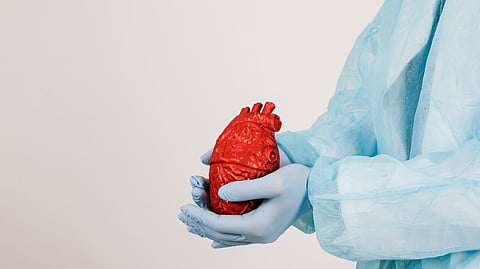Who Was Dr. Christiaan Barnard?
Dr. Christiaan Barnard was a South African cardiothoracic surgeon. Born in Beaufort West, South Africa, he studied medicine at the University of Cape Town and later trained in the United States, where he honed his skills in cardiothoracic surgery and organ transplantation.
The Patient and the Donor
The recipient, Louis Washkansky, a 54-year-old man in end-stage ischemic cardiomyopathy, received the heart of a 25-year-old woman, Denise Darvall, who was hit by a drunk driver, and became the first human heart donor. Within hours, the new heart worked, Washkansky regained consciousness and spoke with his wife, but succumbed 18 days later from pneumonia exacerbated by immunosuppressive therapy.
Impact on Medicine and the Surge of Transplants
The first human heart transplant had a profound and lasting impact on the field of medicine. Dr. Barnard’s bold step proved that a human heart could be removed and replaced, and that the recipient could regain consciousness and function, even if briefly. It also inspired a wave of similar surgeries. By the end of 1968, over 100 heart transplants had been performed around the world. Though many early patients had limited survival due to immune rejection and infection, these setbacks pushed the medical community to innovate immunosuppressive therapy, refine surgical techniques, and improve donor-recipient matching protocols.
Controversies and Criticisms
This procedure also raised debates surrounding organ donation, brain death criteria, and informed consent. With fame came criticism and controversy. Critics questioned whether Barnard had moved too fast, chasing headlines rather than long-term success. He controversially claimed an 80% success rate, based on his prior animal experiments, which drew backlash from ethicists who felt it was misleading when applied to a single human case. Others pointed to issues around informed consent and whether Washkansky truly understood the risks.
The Overlooked Story of Hamilton Naki
There was also the story of Hamilton Naki, a Black South African lab technician who had worked on animal transplant models with Barnard. Naki was a highly skilled self-taught surgeon who played a crucial role in research surgeries on animals, helping to refine techniques used in human transplants.
However, due to the oppressive apartheid system, Naki was not permitted to hold formal medical credentials, nor was he allowed to work in the operating room of a hospital, let alone participate in human surgeries. The law at the time barred Black South Africans from holding senior medical roles, regardless of their competence or contribution.
Despite his skill, Naki did not assist in the 1967 human heart transplant. This fact is confirmed by official records and accounts from team members. In later years, however, several well-intentioned media reports and obituaries, including those from major outlets, inaccurately credited him with being part of the surgical team. These stories sought to highlight racial injustice but ended up distorting the historical record.
The confusion reflects both the real injustice Naki endured and the risks of rewriting history, even with good intentions. While he was denied recognition during his lifetime, Naki's story has since become a powerful symbol of brilliance suppressed by systemic racism and a reminder of those whose contributions remained in the shadows.
Redefining Death
Another major talking point was Barnard’s decision to remove the donor heart after a declaration of brain death. His choice pushed the conversation forward, forcing the medical world to rethink how we define death.
Breakthrough or Spectacle?
So, was it a medical breakthrough or a media spectacle? In reality, it was both. The surgery changed the future of heart care and helped build public trust in organ donation. But it also came wrapped in controversy, headlines, and moral questions that doctors and journalists are still unpacking today.
References:
Kleinhans, F. W. 2017. “A History of Heart Transplantation.” South African Medical Journal.
https://www.ncbi.nlm.nih.gov/pmc/articles/PMC5701108/
Low, A. J., M. Smith, and E. R. Schachner. 2018. “Christiaan Barnard and the Heart Transplant: Surgery and Emotion in the 1960s.” Journal of the Royal College of Physicians of Edinburgh
https://www.ncbi.nlm.nih.gov/pmc/articles/PMC6062759/
The Controversial Case of The World's First Heart Transplant | Louis Washkansky
https://youtu.be/TJlZmVg32XU?si=8urUrK-nhy_j1tdd
Reviewed by Dr. Sumbul, MD Anatomy
SS/MSM/SE


